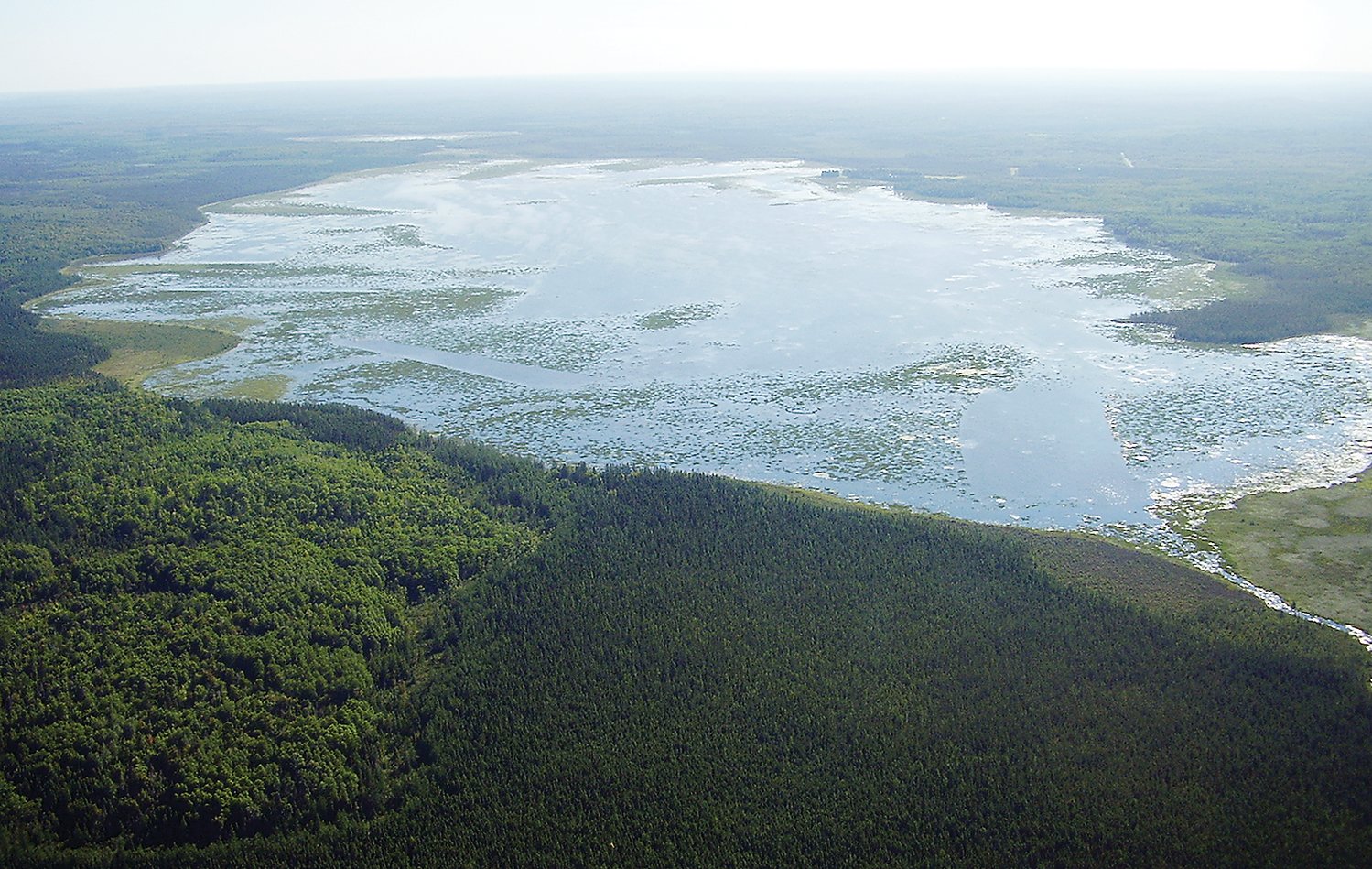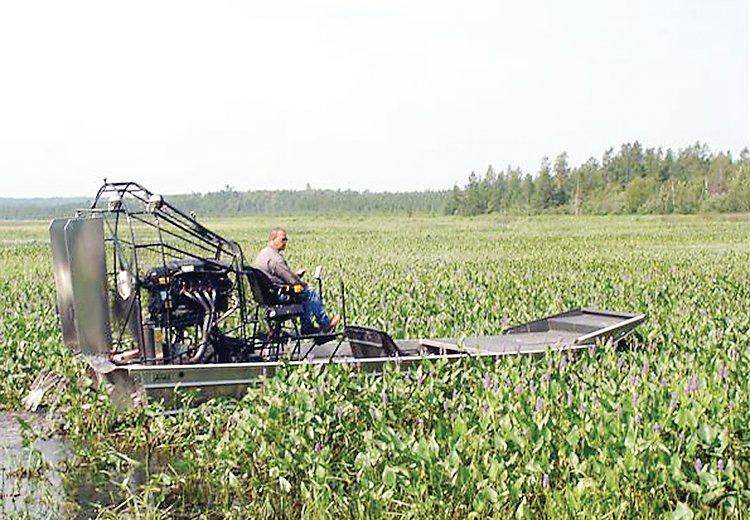Support the Timberjay by making a donation.
Major state grant to fund Big Rice restoration effort
A total of $845,000 earmarked in hopes of bringing back wild rice
BIG RICE LAKE— Twenty-five years ago, Minnesotans launched canoes here by the hundreds each fall in hopes of gathering their share of what was once one of northern Minnesota’s highest-quality and …
This item is available in full to subscribers.
Attention subscribers
To continue reading, you will need to either log in to your subscriber account, below, or purchase a new subscription.
Please log in to continue |
Major state grant to fund Big Rice restoration effort
A total of $845,000 earmarked in hopes of bringing back wild rice

BIG RICE LAKE— Twenty-five years ago, Minnesotans launched canoes here by the hundreds each fall in hopes of gathering their share of what was once one of northern Minnesota’s highest-quality and most reliable wild rice crops. In a good year, when viewed from the shore, Big Rice and its 1,917 acres looked like a vast field of grain— one that fed both people and huge flocks of migrating ducks and geese.
Today, the lake still attracts a few duck hunters come the season, but the throngs of ricers have mostly gone elsewhere, as the lake’s once-robust stands of rice have all but disappeared.
Wildlife managers from the Department of Natural Resources have acknowledged that management changes they initiated nearly two decades ago played a major role in the decline of the lake’s wild rice. In more recent years, however, they have been working to restore the lake’s former abundance and those efforts have now gotten a major boost from an $845,000 grant from the state’s Outdoor Heritage Fund earmarked entirely for the restoration of Big Rice Lake.
As habitat project funding goes, it’s unprecedented in this part of Minnesota, according to Tower Area Wildlife Manager Tom Rusch. “It’s the biggest habitat project ever for this area, bar none,” he said. Wildlife habitat projects typically come with price tags of a few thousand dollars, so Rusch still seems shocked by the sum involved with this effort.
Melissa Thompson, a wildlife lake specialist with the DNR’s Tower area office, said the five-year funding package should allow the agency and its partners, including the Bois Forte and Fond du Lac Bands, to make major strides in recovering the lake’s rice crop.
Over the past five years, managers from both the DNR and Fond du Lac have made some progress in battling pickerel weed, which appears to be the biggest factor behind the decline of wild rice here. Using giant blades attached to the rear of an air boat, crews have been shearing about 100 acres of pickerel weed each year.
“We’ve been doing that five years now,” said Thompson. “Each year, we target about 100 acres and each of those areas has to be cut twice a year for two years in a row.” While such an effort would likely be sufficient on most wild rice lakes, which tend to be relatively small, it barely makes a dent on a lake the size of Big Rice. Thompson estimates that at least 1,000 acres of dense pickerel weed exists on the lake, so shearing 100 acres in a season can barely keep pace with the spread. And since the remaining pickerel weed continues to make seed, it’s tough to gain much ground without a more concerted effort.
The new funding will allow the DNR and its partners to do much more starting this year to focus on three primary objectives, including:
Ramping up the shearing and removal of pickerel weed. Both the Fond du Lac and Bois Forte will be committing additional time for the use of their own equipment, including air boats and a harvester barge which allows crews to break up and remove pickerel weed that’s too thick for an air boat to get through. The DNR will also be purchasing its own air boat, at an estimated cost of $70,000, and will have two full-time seasonal tech workers to operate the craft. That will allow the DNR to shear much more of the pickerel weed each year. “It’s a big lake and this gives us the opportunity to really make some headway,” Thompson said.
The air boats, and a second craft known as a “harvester barge,” which is used by the Fond du Lac band, will also be used to scarify the lake bottom in order the break up the thick mats of accumulated vegetation lying underneath the vast beds of pickerel weed.
Thompson said that work has already been tried on a more limited basis on Big Rice, with favorable results. “You can see the areas where we’ve done that and the abundance of rice is better,” said Thompson.
The good news is that it appears there is still enough residual seed in the lake sediments to rebuild the rice crop over time. It just takes the right conditions to help it grow.
Restoring the lake’s outlet to obtain a more natural fluctuation of water levels. If there’s one single event that marked the deterioration of the rice crop here it was the installation of a rock weir at the outlet on the lake’s west end. DNR staff had installed the weir in an effort to improve rice yields and, at first, the approach seemed to work. But over time, the greater stability of the lake’s water level appeared to favor the development of pickerel weed over wild rice. Year-by-year, the pickerel weed spread across more of the lake, wiping out once productive rice stands.
As part of the restoration effort, the DNR will be removing the weir and sediments which have accumulated around the outlet over the years, allowing the lake level to fluctuate more naturally, which they hope will again tip the balance back in favor of wild rice.
Improvements to the lake’s public landing. The funds will help deepen the launch site as well as remove some large rocks further out from the landing that have been an impediment to some of the larger craft that the DNR will be using in the restoration effort.
It’s a major investment that DNR officials hope will mark a turnaround for what was once an important resource for both people and wildlife in this portion of the Superior National Forest.
“Overall, the goal is to enhance wild rice,” said Thompson.






